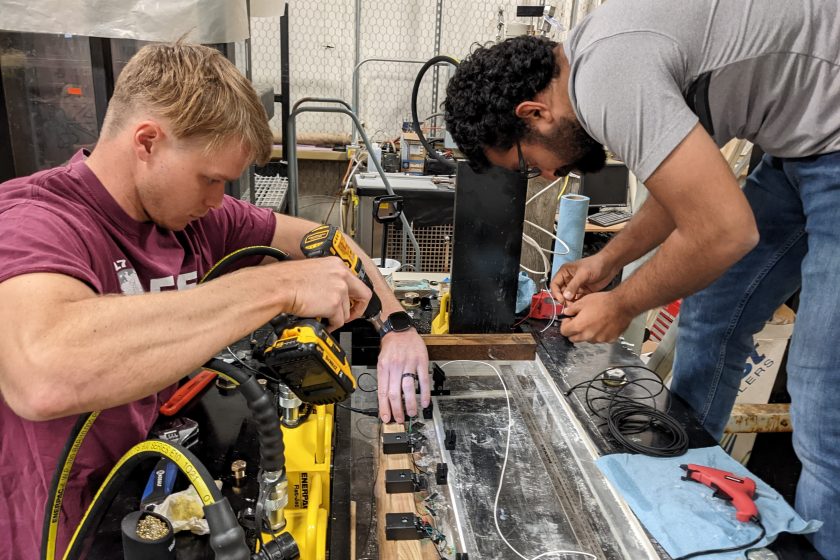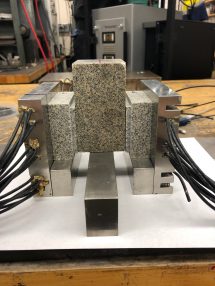Scientists Find Early Warning Sign in Lab-Made Quakes
December 8, 2024

Earthquakes happen in irregular cycles, making it difficult to know when or where the next one may strike. Although seismic records show that tremors and other geological movements occur before large earthquakes, earthquake faults produce as many random rumbles as meaningful tremors.

That means a critical part of seismic research is separating what’s important from the background noise. Working in the lab, a team of researchers at the University of Texas Institute for Geophysics has made a promising discovery — isolating a pattern of “foreshock” tremors.
The finding, which was described in Nature Communications, offers hope that future earthquakes could be forecast by the swarm of smaller tremors that come before them.
“If we’re ever going to predict or forecast earthquakes, then we need to be able to measure, characterize, and understand what’s happening right before the earthquake,” said Chas Bolton, a research assistant professor at UTIG.
Bolton and collaborators measured earthquake cycles on a miniature lab-made fault at Penn State. The fault is only 2 inches long — orders of magnitude smaller than the real thing. But experiments revealed a pattern of tremors that got stronger and occurred more closely together as the lab earthquake approached. No such pattern was found for slower or weaker earthquakes. This pattern is significant because it means the tremors are connected to the main shock, Bolton said.
“It gives you a physical explanation for what’s controlling the foreshocks,” he said.
It also gives researchers a telltale pattern to look for in the real world. That’s exactly the next step for Bolton, who is beginning that work, starting in Texas, to isolate similar patterns in measurements made by the state’s seismological network, TexNet, which is managed by the Bureau of Economic Geology.
Back to the Newsletter